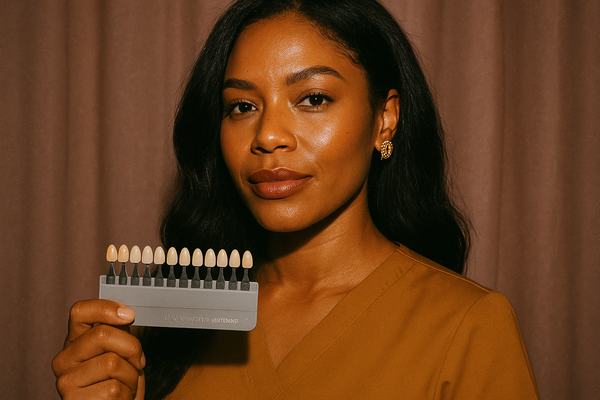The Burning Question: Is Prison Dentistry for You?

By Jean Carter
I still remember the day I told my employer I was leaving. Not just leaving Houston, Texas, for a rural town a hundred miles north—but leaving private practice altogether. And for what? A position in a state penitentiary.
The reaction was immediate: “Oh God, why?”
It was a fair question. Why walk away from a thriving, multi-location practice with all the hallmarks of success to work behind cold concrete walls? Truthfully, the thought crossed my own mind. Yet, without hesitation, I pressed on.
For those who know me, this wasn’t shocking. I’ve never been one to thrive in routine. I admire the clinicians who find satisfaction in the rhythm of private practice—because that consistency is valuable. But me? I’ve always gravitated toward chaos. Some call it a gift. My mother called it what it really is: a glutton for punishment.

A Day Behind the Gates
So, what’s it really like to practice dentistry in prison?
The day begins early, with a 5 a.m. shakedown—yes, the kind you’d expect, complete with a pat-down and TSA-style screening. Once cleared, you walk the long, echoing halls where voices carry—shouts, boots on concrete, the clang of cell doors.
The sanctuary, if you can call it that, comes when you finally reach the infirmary. A badge flashed through a small metal window grants access to the clinic, where the real work begins. By 6 a.m., patients are already in the chair.
Treatment in correctional dentistry is as back-to-basics as it gets. Bread-and-butter procedures dominate: extractions, anterior composites, posterior amalgams, simple root canals, dentures for those with longer sentences. But the scope isn’t limited to the basics. If there is a need, we meet it. In recent years, services have expanded to include more prosthetics—dentures, partials, even flippers—giving patients access to treatment plans that restore both function and dignity.
In fact, much of the workflow mirrors private practice. Patients receive comprehensive exams, wait in reception areas for appointments, and progress through phased treatment plans. The difference is the environment—but the systems and standards are surprisingly familiar.
To some clinicians, it may sound archaic to be placing amalgams in 2025. But the truth is, dentistry in this setting is a return to fundamentals. These are the tools that built the foundation of our profession, and they remain durable, reliable, and effective.
Beyond the Operatory
Correctional dentistry is not only about clinical skill—it’s about meticulous systems and compliance. Nothing, and I mean nothing, can be expired. From sterilization logs to instrument counts to unannounced state audits, the administrative rigor is as demanding as the clinical work. Every request, every patient chart, every supply is tracked.
But there are benefits, too. Working under the state and university system means enviable hours—typically 6 a.m. to 2 p.m., Monday through Friday—with evenings, weekends, and holidays free. Paid time off, excellent insurance, retirement pensions, and continuing education support round out the package. Loan repayment programs also sweeten the deal for those carrying the burden of dental school debt.
The Patients’ Perspective
One of the most unexpected rewards is the gratitude of the patients. Many of these individuals have never had access to quality dental care—or even basic dental education—before incarceration. For them, the clinic is a new experience: comprehensive exams, routine prophylaxis, treatment planning, and sometimes the first restorative work of their lives.
Patients are often genuinely appreciative, and for some, the dental chair becomes a place of both relief and learning. It’s not uncommon to see the lightbulb go on when you explain brushing techniques or why oral hygiene matters. In that sense, the work is not just treatment—it’s education, empowerment, and in many cases, the first step toward long-term oral health.
The Realities You Must Face
Of course, this path is not without challenges. The environment takes its toll:
- Turnover: Nearly half of staff leave within five years.
- Burnout: Exposure to trauma, emergencies, and inmate distress can mirror symptoms of PTSD.
- High-stress scenarios: Conflicts between inmates, emergencies, and the ever-present weight of security protocols are part of daily life.
- Ethical dilemmas: Clinicians constantly balance security concerns with humane treatment.
- Team dynamics: Success hinges on trust, communication, and collaboration with custody staff and medical teams alike.
Despite these realities, there’s another side of the story. Providing care in this environment strips dentistry down to its essence—relieving pain, restoring function, and serving a population that desperately needs it.
So—Is It for You?
Prison dentistry is not glamorous. It doesn’t come with glossy brochures, luxury operatories, or the latest aesthetic techniques. What it does offer is structure, purpose, and a return to the heart of our profession.
It requires resilience, adaptability, and a strong ethical compass. It is demanding, structured, sometimes chaotic, often challenging—but deeply impactful.
So, the burning question remains: Is prison dentistry for you?
Only you can decide. But for those willing to trade routine for resilience, private practice perks for public service, and stability for something profoundly human—behind those gates, you may just find a career you never expected.




